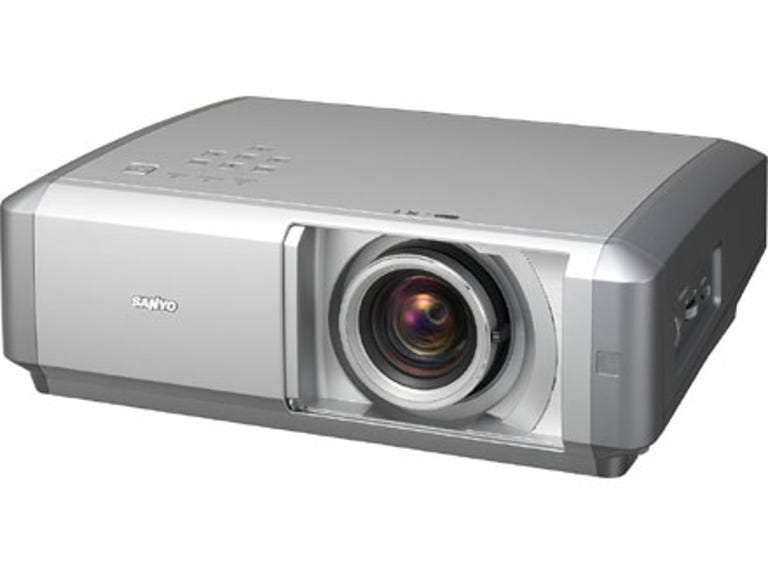 Why You Can Trust CNET
Why You Can Trust CNET Sanyo Z4 review: Sanyo Z4
Sanyo's Z4 is an incremental upgrade to the Z3 home theatre projector. It features deeper black levels and dual component inputs, but the overall size and weight has increased as well.
Design
The Good
The Bad
The Bottom Line
It does, however, have some significant design upgrades from the previous Z3 model. While the front of the Z3 featured a hinged front panel which had to be flicked forward to unveil the lens and lens controls, the Z4 has an automated sliding panel. Turn on the machine and the panel pulls away to reveal the lens, turn it off and it slides back into place. It's a wonderful idea for those who regularly forget to put lens caps back on projector when they're not in use. The lens controls -- which includes two dials for shifting a projected image (up/down and left/right), plus a lock button which fixes an image in place -- can now be found on the left hand side of the projector. For further image position manipulation, the Z4 features two adjustable feet at its front which allows you to adjust an image's overall height. The Z4's control buttons are arrayed neatly on the top right of the unit.
Like the projector itself, the Z4's remote control won't win any awards for style (it feels rather plastic), but it is small, solid and comes with some easy to use features. We particularly like the individual buttons for each input into the projector, and the fact that it features a yellow backlight (which can be instantly turned on or off).
Features
Sanyo has implemented a twin iris mechanism which it says allows the Z4 to have an impressively high contrast of 7000:1. DLP projector pundits will, of course, scoff at such high contrast claims, but for the most part the unit tends to deliver (see our Performance section below for more details). Brightness is rated at a maximum 1000 lumens, while the lens has a 2X zoom lens. The amazing ease of placement options we loved with the Z3 is back with Z4. The projector comes with both a vertical and horizontal lens shift, which allows you greater freedom of placement for the projector. And as mentioned earlier, the Z4 now comes with a lock button which stops the image from shifting once you've found your ideal position for it.
Connectivity's a cinch with the Z4, with Sanyo's latest featuring a HDMI connector and two component inputs. You'll also find composite, D-Sub and S-Video inputs at the back.
Performance
We calibrated the Sanyo Z4 using our Digital Video Essentials test disc and found the image produced to be generally pleasing (and at the very least competitive when compared to our highly rated Panasonic PT-AE900). As promised by its high contrast rating, contrast on the Z4 is impressive, picking up plenty of details in dark scenes such as the opening space battle in Star Wars Episode III. But while its level of contrast was a plus, we found blacks on the Z4 to appear a little bright and washed out.
What the projector does handle well is colours, displaying vibrant images that pop out from the screen. Flesh tones are realistic, and the projector has no problems rendering fast moving action scenes (there's no trace of blur or distortion). Pixelation is more evident than the Panasonic PT-AE900 at very close viewing distances, but effectively disappears further out.
As you can read from our article, we think the Sanyo's closest competitor is the similarly specced Panasonic PT-AE900. Both produce an exceptional picture, but the Sanyo probably has the edge when it comes to contrast and picture adjustment options. The Panasonic, however, has one important advantage -- price. At AU$3499, the PT-AE900 is AU$500 cheaper, although that doesn't diminish the Sanyo's standing as one of the best mid-range LCD projectors available today.
